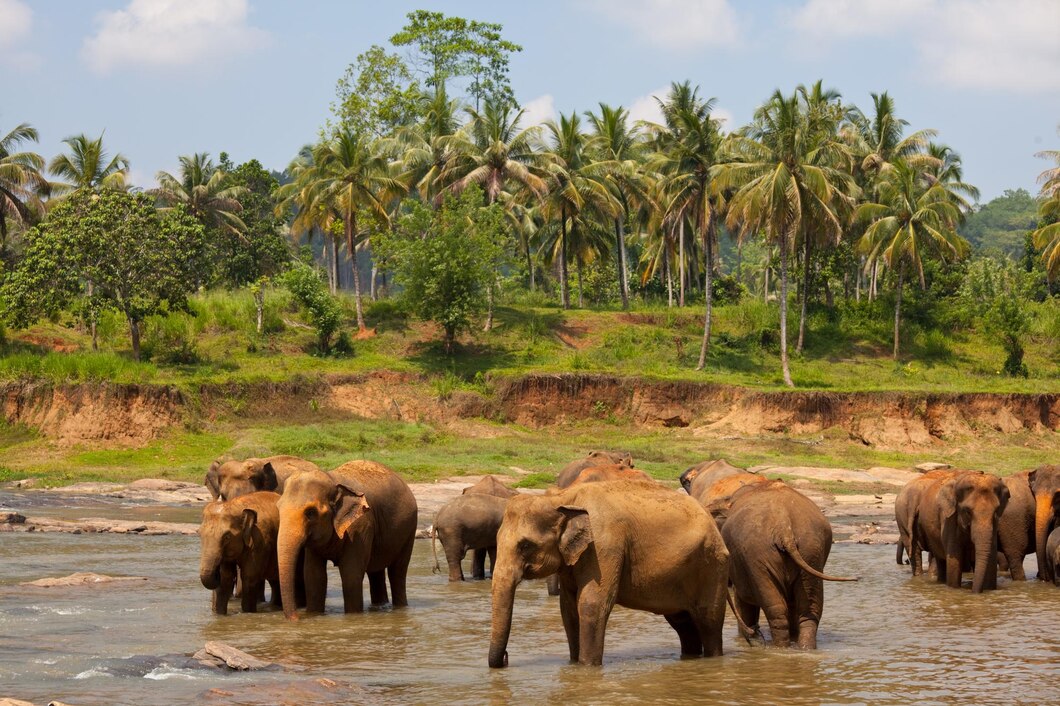Culture
Discovering the Charms of Sri Lanka

By Wajiha Farooq
Imagine a tiny island surrounded by a big, blue ocean!
Known as the jewel in the Indian Ocean, Sri Lanka is a land of ancient history, vibrant culture and breathtaking landscape, creating an unforgettable experience for visitors. From mist-shrouded mountains and beaches to the astonishing scenic beauty, this island nation is a delight for travelers.
Nature in Sri Lanka comes as a breath of fresh air. With wild animals such as elephants and leopards running around forests and jungles, the Wilpattu Reserve stands out in the list. Elephants are abundant in the country and Colombo even has an elephant orphanage, which tourists love to visit. If you like plants and trees, Kandy’s Royal Botanical Garden is the place to be in with the largest tree spread on both sides and its branches supported by thick sticks. Nuwara Eliya on a height has lush green hills covered in tea bushes. And not to forget, the waterfall known as Hunas Falls is like giant showers from the sky. For a first-time visitor, it was indeed a treat to visit this island.

Not only did we see scenic beauty, we also had the opportunity to step back in time as we explored the traces of ancient civilizations that have left their mark on the island. The UNESCO World Heritage Site of Sigiriya, with its towering rock fortress, is a testament to the originality of Sri Lanka’s ancestors. Wandering through the ruins of Polonnaruwa and Anuradhapura, once bustling capitals of mighty kingdoms, we marvelled at the intricately-carved temples and stupas that dot the landscape.

No visit to Sri Lanka is complete without a journey through lush green tea gardens. The scenic train ride through the rolling hills of Nuwara Eliya, where emerald-green tea plantations stretch as far as the eye can see, it is a treat to see a tea factory, witness the time-honoured process of tea production and savour a freshly brewed cup of Ceylon tea while soaking in breathtaking scenery.
Our next stopover was the pristine coastline; Sri Lanka boasts some of the most beautiful beaches in the world. From the tranquil shores of Mirissa to the surf break of Arugam Bay, there’s a beach for every taste. Diving into the crystal-clear water of Hikkaduwa to explore vibrant coral reefs and unwinding on the soft sands of Trincomalee, the trip turned out to be a pure delight.
The country’s diverse religious landscape, reflected in its festivals and rituals, is another aspect that might catch your attention. We were lucky to witness the annual Esala Perahera in Kandy, which is a spectacular procession honouring the sacred tooth relic of the Buddha, featuring colourful parades, traditional music and elaborated costumes. Another one was the Tamil Thai Pongal Festival, where farmers celebrate the harvest season with prayers and feast, showcasing the importance of agriculture in Sri Lankan culture.

The most interesting part of the visit was the warmth and hospitality of the Sri Lankan people. From the bustling market of Colombo to the remote villages of the hill country, we were greeted with smiles and open arms, whether sharing meals with the local family or participating in a traditional ceremony. We were also enchanted by their leather goods, wood items and crockery and everyone in our group went on a buying spree.
Despite its rich cultural heritage and traditions, Sri Lanka has faced its recent share of challenges, including a decade long civil war that started in 1983 and ended in 2009, and natural disasters such as the 2004 tsunami. However, the resilience and spirit of its people have enabled the country to overcome adversity and emerge as a great tourist destination.
